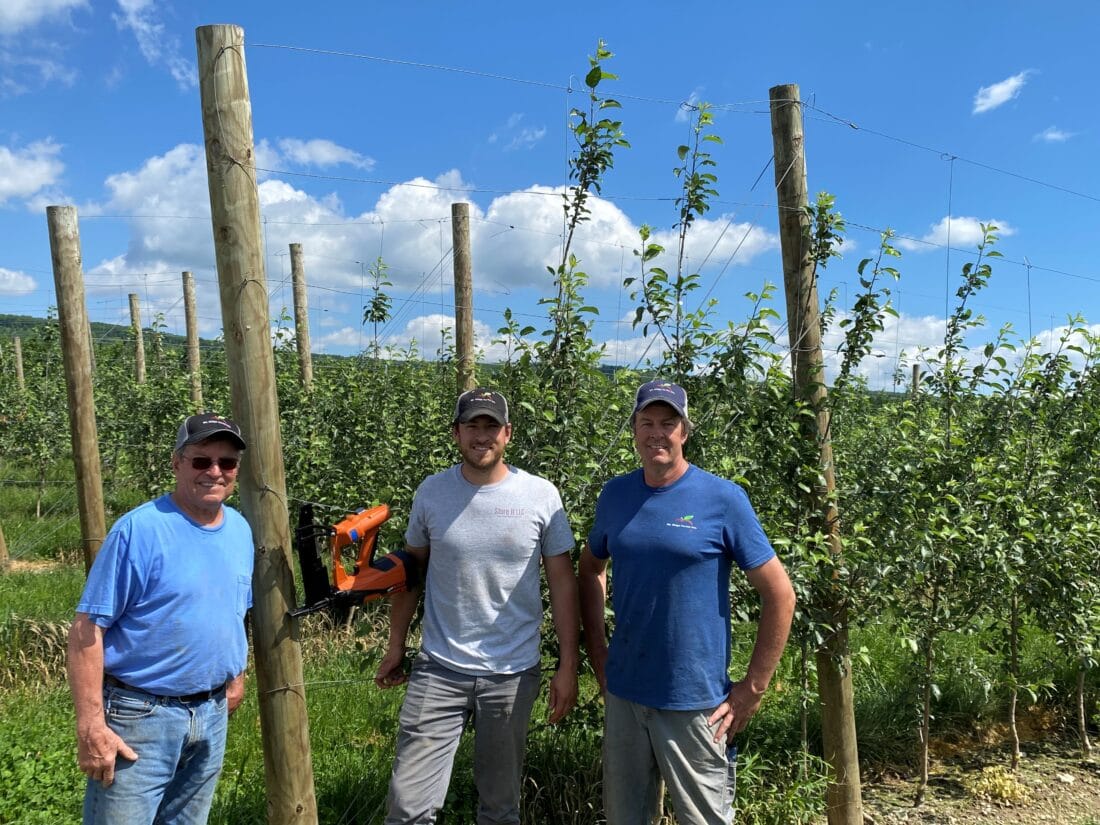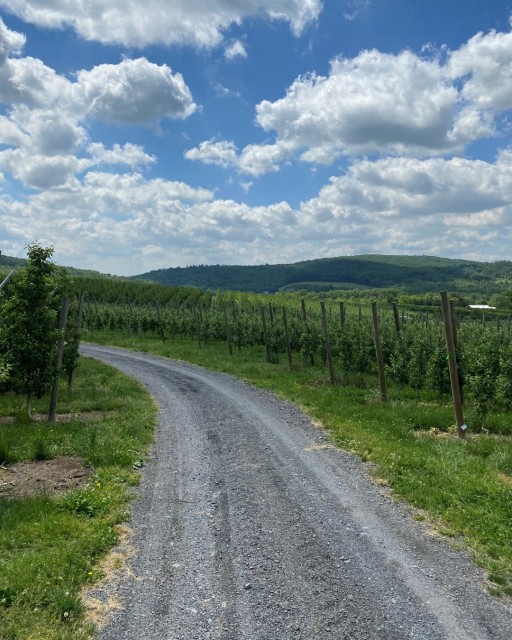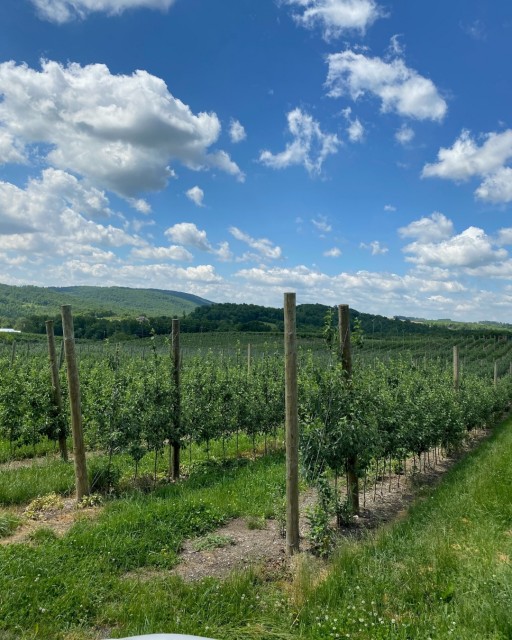David Slaybaugh’s quest is to grow the best quality piece of fruit he can possibly grow – he says it is all about learning skills and ideas from leaders, trialing, finetuning, then keeping what works.
David and Blake, father and son, are fourth and fifth-generation apple growers from Mt Ridge Farms, Adams County, Pennsylvania on a family group farm established in 1930. With roughly 600 acres of apples and 50 acres of peaches, Mt Ridge is one of a concentration of orchards within 100sq miles which catapults Pennsylvania into fourth place, after Washington State, New York, and Michigan, for US apple production.
“We do go out and try to be a leader in our area, trying new things. We go to the international Fruit Associations, go overseas, Germany, Switzerland, New Zealand. See leaders in those areas and see what we can implement in our place right here.”
For now, the high-density trellis is one of the latest pioneering adventures on Mt Ridge farm attracting second glances at 1200 to 2400 trees per acre, on five to eight-wire trellis.
“We are one of a few growers planting V-systems in PA. We run a straight wall at 2.5 x 11 feet, and experiment between a12″ and 15” x 12 feet V system, planting one tree every 15 inches, leaning one one-way, the other way. Trellis is run along both sides, requiring double the wire, double the posts.
Originally David thought the weakest link of a trellis system, was the staple.
“Given the elevated location, the orchard can experience significant wind shear: micro-bursts of wind at 40 to 50 miles an hour on full-weighted trees. It’s important that our trellis system doesn’t fail. We started by drilling through the posts and running wire through the holes, not using any staples. That ended up taking a lot of time.”
Three years ago, the Slaybaughs trialed a Stockade ST400i cordless power stapling tool. “It took about five minutes to know it was what we wanted. Using the ST400i tool I would say we are saving between 100 to 200% of labor costs compared to hammering by hand.”
Stockade’s high-quality power-driven staples with consistent depth-set also give the Slaybaughs greater confidence in the lifetime of their trellis system. It is the ideal scenario for the first movers in high-density trellis as they look for their next leap forward “robotics”.
“Robotic harvester systems prefer fruiting walls at approximately 12-15 inches deep per side. They say the most efficiency comes from an eight-wire system, tying limbs to the wires so apples hang under the wire, this allows the harvester to pick fruit at least a 90% efficiency. Technology takes time, but when it does come, we are ready to switch over our orchards to robotics.
“You have to be moving with technology or you are going to be left behind. You’ve got to be using it, and not be afraid of it or you are not going to be in business.”



